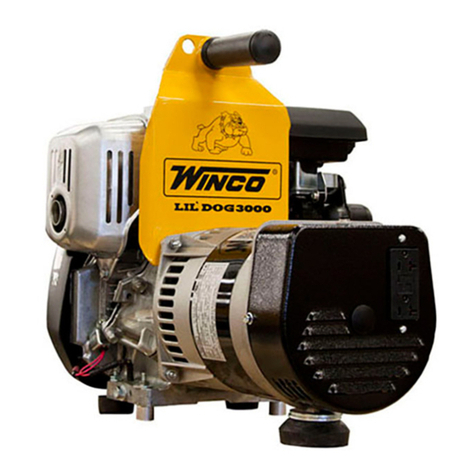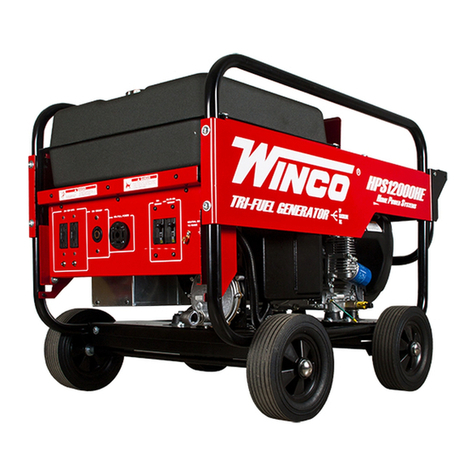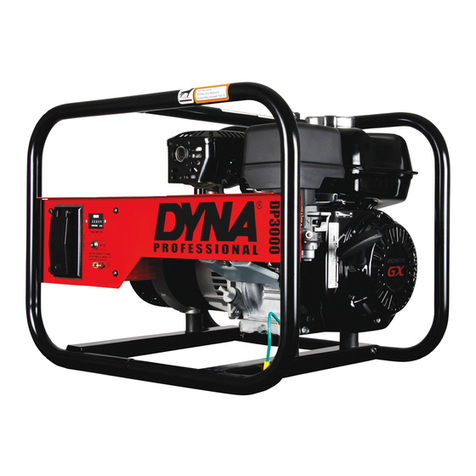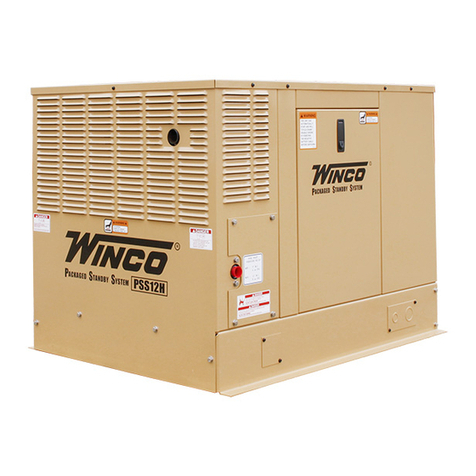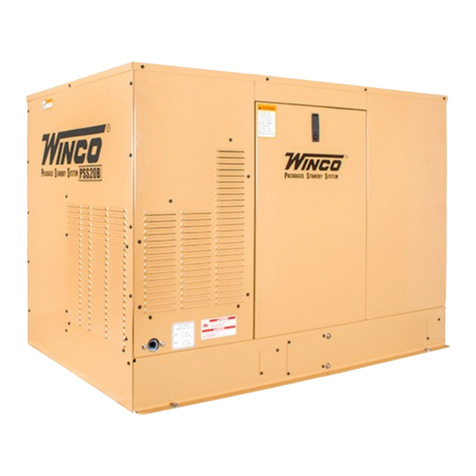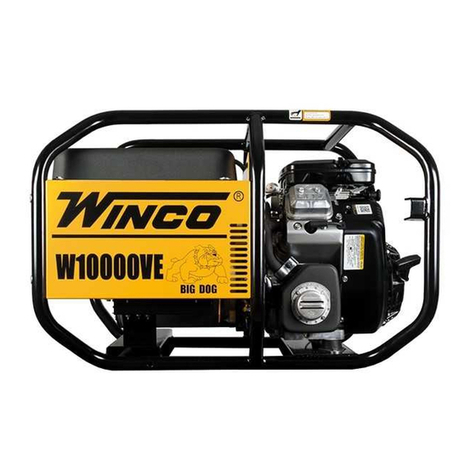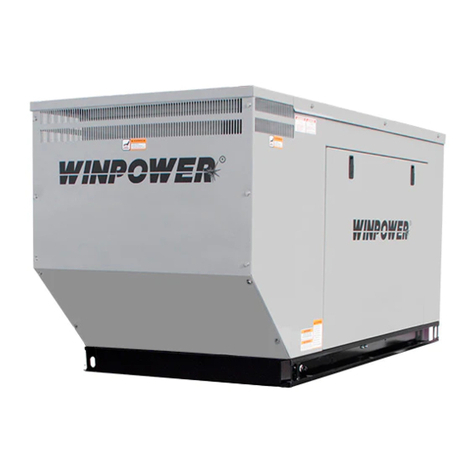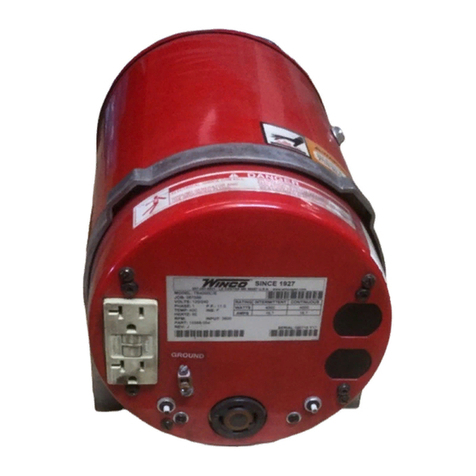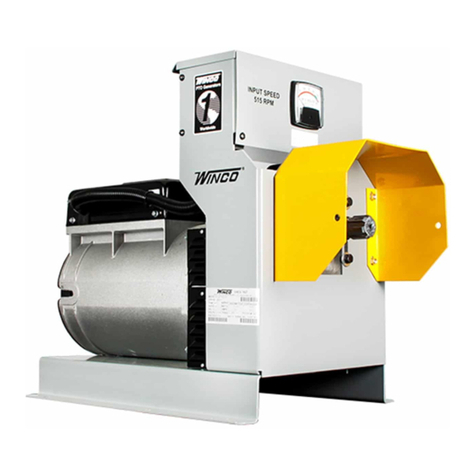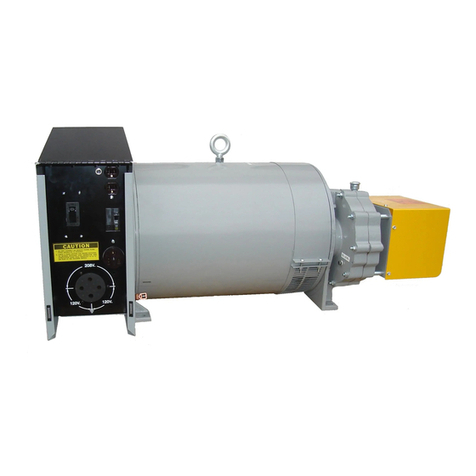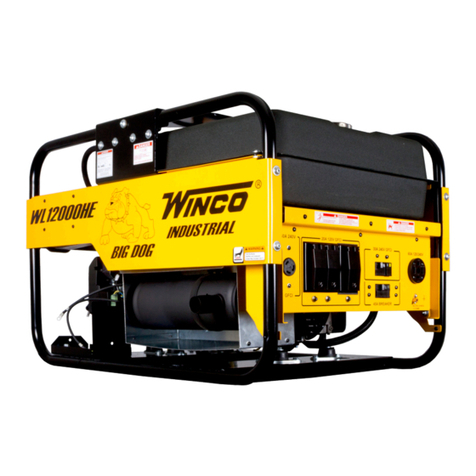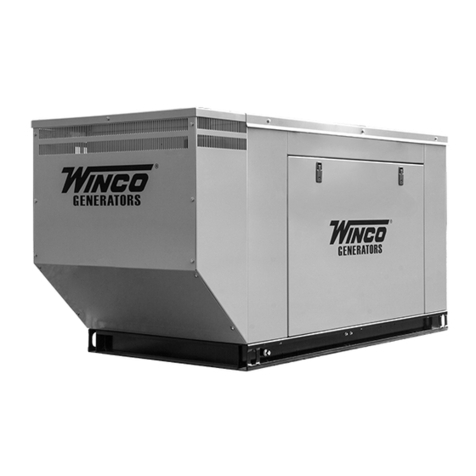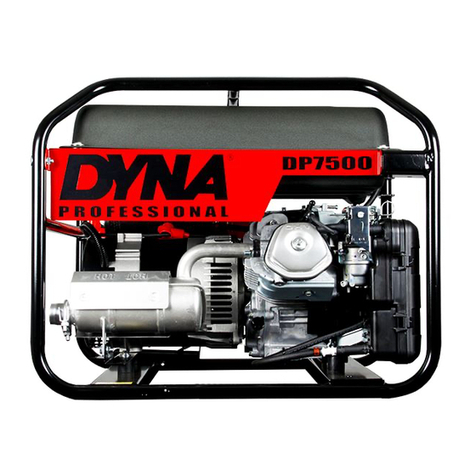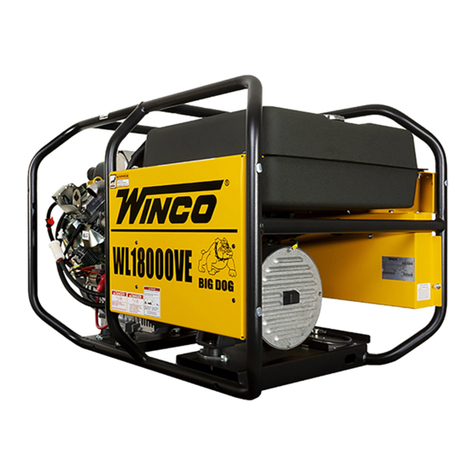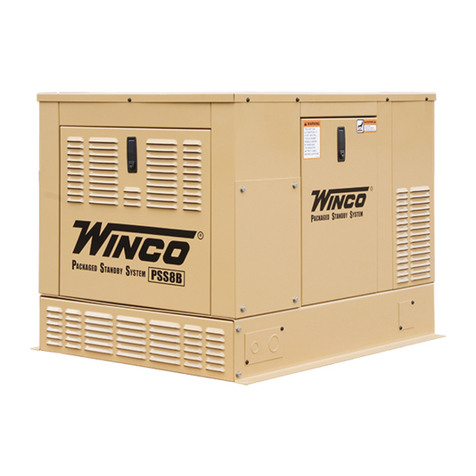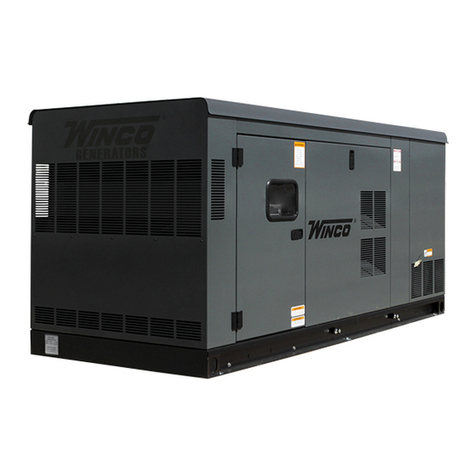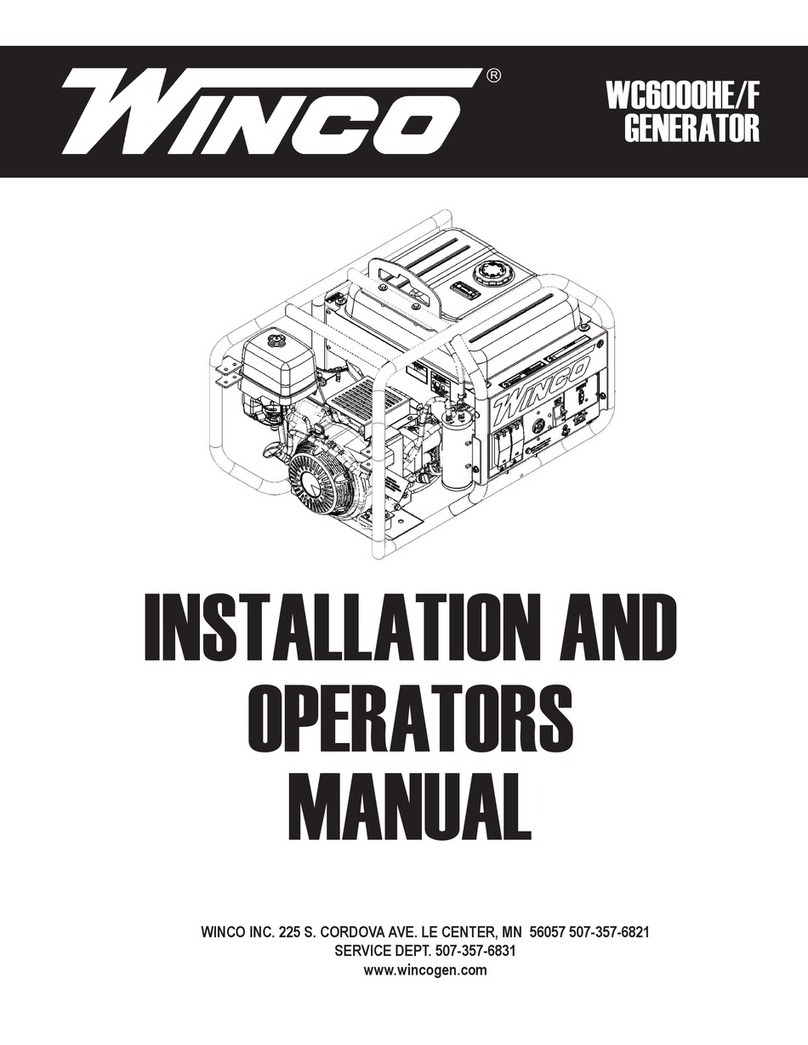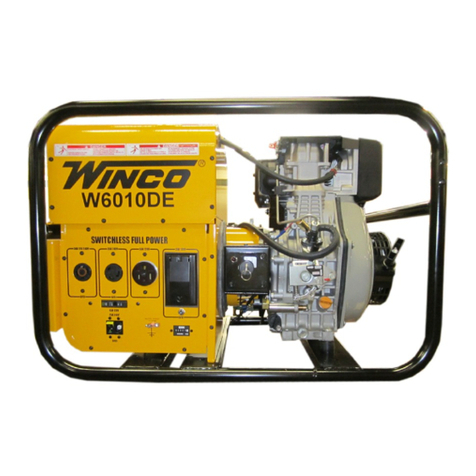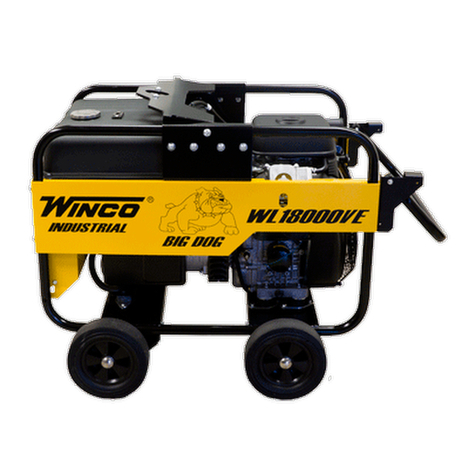
6REV BOPM-111
LIQUID PROPANE VAPOR (LP)
Refer to the tables on the following pages for fuel line size and
recommended tank size. For distances of 25 feet or over, a two
regulator fuel system is recommended. This is accomplished by
installing a primary regulator at the tank which will reduce the tank
pressure down to 10 to 15 lbs. A low pressure regulator is installed to
further reduce the fuel pressure to the required six (6) oz. operating
pressure. This low pressure regulator must be at least 10 feet from the
engine generator set; any closer installation will require a larger line be
installed to provide a fuel reservoir. This is also true for the single low
pressure regulator, it should also be a minimum of 10 feet from the unit.
If this is not done, the demand regulator on the unit and the pressure
regulator in the fuel line will interfere with each other. When the two
(2) regulator system is used on LP, a fuel line size of 3/4 to 1 inch is
generally adequate for distances up to 300 feet from the primary to the
low pressure regulator. Consult your local fuel supplier for your exact
requirements . The appropriate line size from the following table is then
installed from the low pressure regulator to the generator set.
Feet* Size of pipe
Up to 25 ft 1” pipe
Over 25 ft Use a two regulator system
*Allow an additional 3 feet for each standard elbow.
DO NOT use ‘street ells’ (restrictive).
LP TANK SIZING
Tank Temperature Tank Size
60° F (16° C) 160 Gallons
32° F (0° C) 300 Gallons
0° F (18° C) 1000 Gallons
-20° F (-29° C) 2000 Gallons
LIQUID WITHDRAWAL SYSTEMS
When installing a unit equipped with the LP liquid withdrawal, a
primary regulator is not required on the supply tank. The supply line
is connected to a liquid withdrawal valve on the supply tank and runs
directly to the fuellock strainer mounted on the engine generator set.
Normally a 3/8 to 1/2 inch copper line is acceptable for this type of
fuel installation. You must be sure that the valve you have connected
to on the supply tank is in fact a liquid supply valve and has a drop
tube inside the tank that is pulling fuel from the bottom of the supply
tank. Before starting the unit, you must conrm that you have a good
liquid supply at the unit. Engine generator sets equipped for liquid
withdrawal will not run properly when supplied with vapor fuel.
NATURAL GAS (NG)
The primary regulator (fuel meter) on the building should deliver the
correct volume and pressure to the generator set. This regulator must
be sized to deliver the required BTU’s to the generator set and all other
appliances in the building. If the primary regulator (fuel meter) is a high
as long as they are structurally sound supporting the weight of the
unit and preventing movement during operation. The mounting holes
on the base of this unit is 0.625” in diameter. The engine-generator is
mounted on a sub-frame which is isolated with special shock mounts
on the main frame. This allows the engine-generator to vibrate without
affecting the control panel on the main frame.
Do not install any shock mounts between the base frame and the
pad. Engine vibration will be transmitted to the control panel causing
erroneous start/stop cycles and premature control failure.
These units should be mounted a minimum of 24” from a structure. This
will allow for ample room to maintain and work on the generator set.
Units must be installed in accordance with all local, state, and national
codes. Consult your local agency for specic requirements.
FUEL INSTALLATION
The fuel supply should be as close as possible to the engine. This will
reduce the installation cost of fuel runs. The information in this manual
is offered to assist you in providing the proper fuel for your engine.
However, this information is only provided to inform you of the engine’s
requirements and assist in making you aware of the decisions you
must make. In no case should the instructions and information provided
be interpreted to conict with any local, state or national codes. If in
doubt, always consult your local re marshal, gas supplier or building
inspector.
WARNING: FIRE HAZARD:
All fuel runs should be installed by a licensed fuel supplier.
To connect the fuel line to the generator set you will connect your
incoming fuel line to the .75 inch NPT tting located on the left side
of the engine-generator set. This tting is shipped with a plastic plug
installed to insure the fuel system stays clean. For all vapor fuel
systems the delivery pressure of the fuel to the fuel solenoid on the unit
must be four to six ounces psi (per square inch) or 7 to 11 inches
W.C. (water column). These fuel pressures are critical; failure to
provide the proper pressure can cause many problems including failure
to start, inability to produce full power, or damage to the equipment.
These generators have been tested with both natural gas and LP at
the factory. Before starting the engine you must verify it is congured
for the proper fuel. See additional information in the NG/LP conversion
section.
INSTALLING THE FUEL LINE
NOTICE: The engine generator sets are properly adjusted before they
leave the factory. The electronic control panel will indicate if the LP
mode is active
NATURAL GAS or LP VAPOR PIPE SIZE
Size of pipe normally required for generators operating on natural gas
or LP vapor. Unit location will determine the size of fuel line that is
required to supply the engine with a constant fuel pressure and volume.
